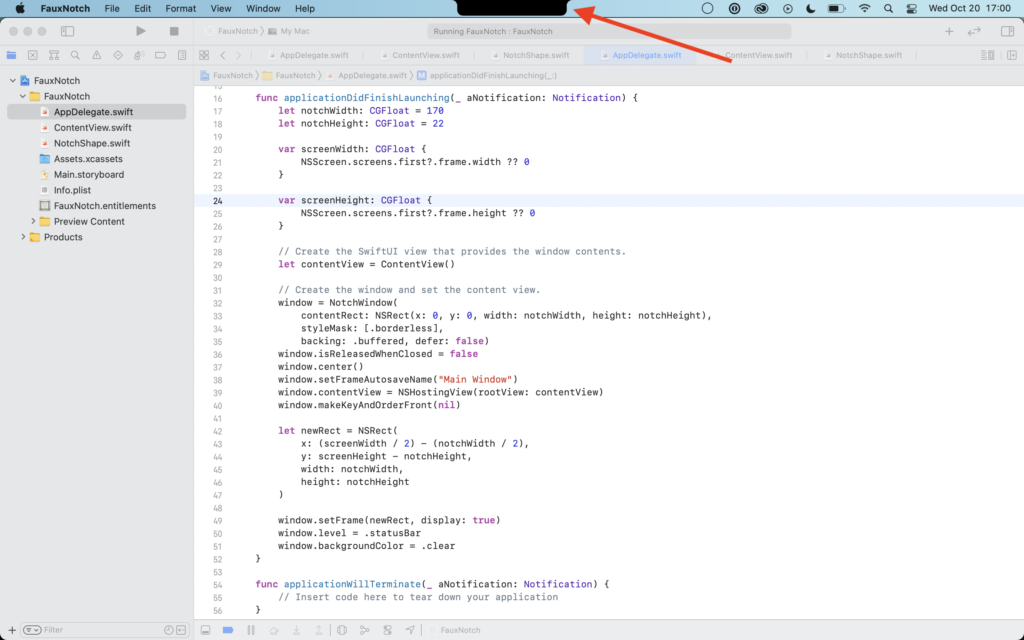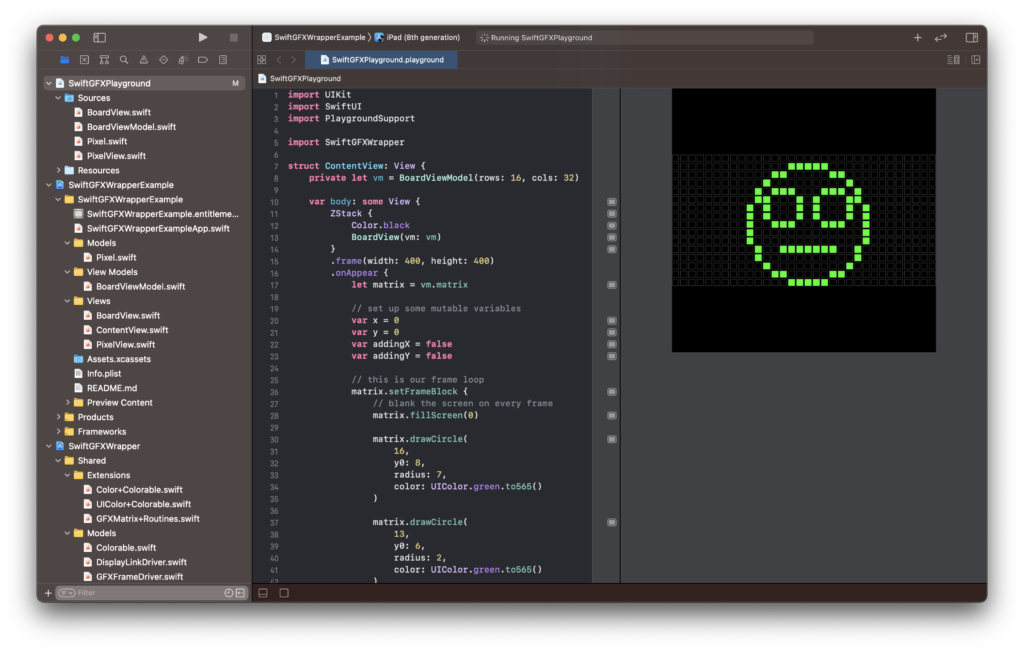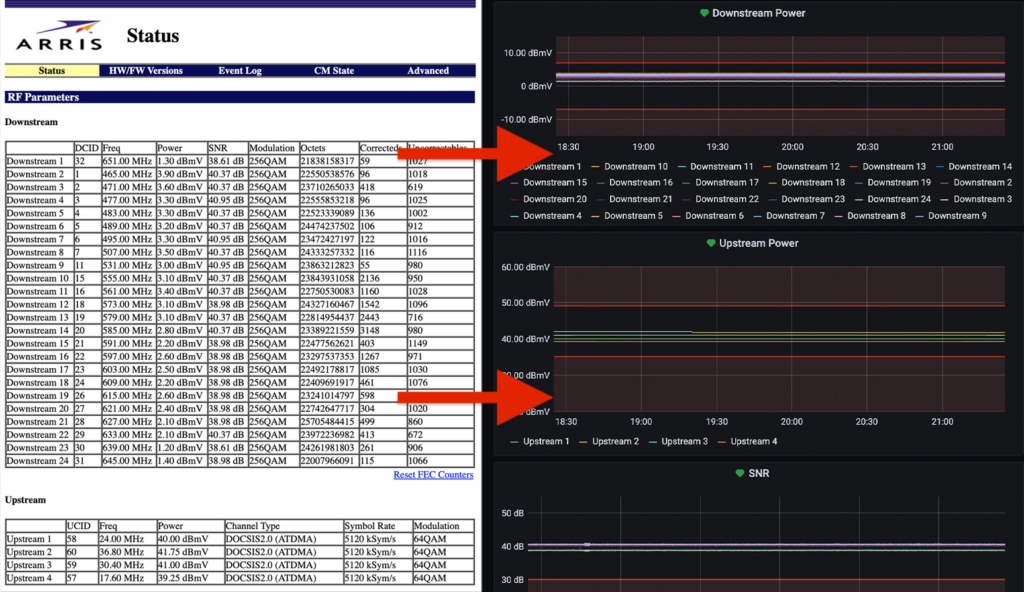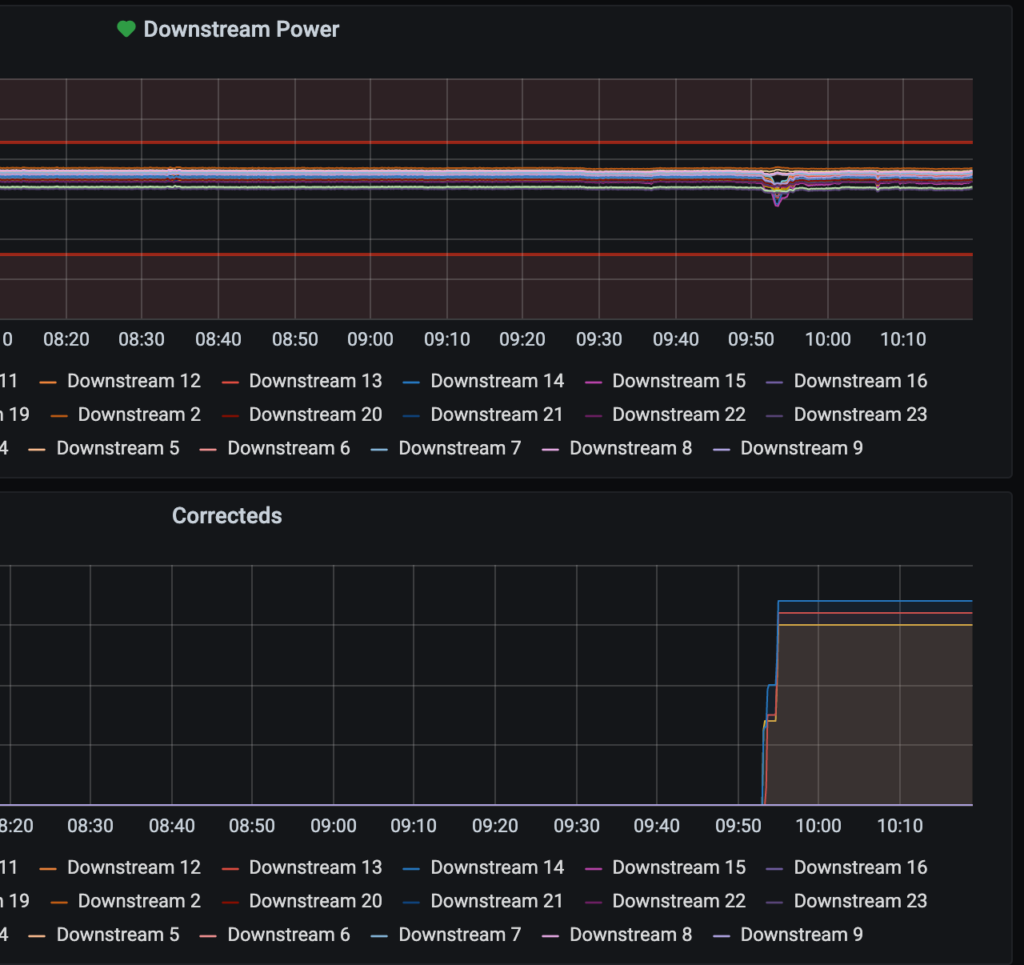Yay computers!
Because I missed a tab in a Python script, my home Docker box has been running with a higher-than-necessary CPU utilization and spiky temperatures for five months. 😬
Tab has now been tabbed. 🐍


Yay computers!
Because I missed a tab in a Python script, my home Docker box has been running with a higher-than-necessary CPU utilization and spiky temperatures for five months. 😬
Tab has now been tabbed. 🐍



I’ve seen a lot of these little “fake notch” apps pop up since Apple’s new MacBooks were announced, but I didn’t see a lot of source code – so of course I was nerd sniped.
Here’s a basic example of making one using AppKit and SwiftUI!

I’m thrilled to be joining the fine folks at Automattic this month as a mobile software engineer. Though I’ll miss all of my wonderful Clemson coworkers immensely, I’m excited for the road ahead. 🚀
I saw flip dots (also called flip discs) last year for the first time and instantly knew I needed some in my life. If you’re not familiar with them, check out how they work!
The particular model I have is the ALFAZETA XY5, which may be the easiest way to get up and running, but certainly not the least expensive.
After getting the board, all you need is:
I plan to write in more detail how it all works, but for this demo the stack is:
Update: Here’s more info on how it all works!
Update March 2025: The main repo URL has been updated as this is now a library.
For even easier prototyping, I’ve added Swift Playground support to my SwiftGFXWrapper project!


It felt good to complete this project that’s been on my list for quite some time. The main goal was to scrape the values from my modem’s status page and pipe them into InfluxDB, which feeds Grafana. Not only could I look at data trends, but I could receive alerts if certain values exceeded an acceptable threshold.
Overall this is a straightforward process:
I knew I wanted to use Python for the project, so I first looked into Scrapy. After wrapping my mind around it (somewhat) I gave it a go and actually had a working solution… but it felt way over engineered and at times inflexible for what I wanted. I threw 90% of that solution away and went with a simpler script.
What I landed on was something that’s custom and lightweight, but extendable in case someone has a different status page or wants to use an alternative to InfluxDB.
